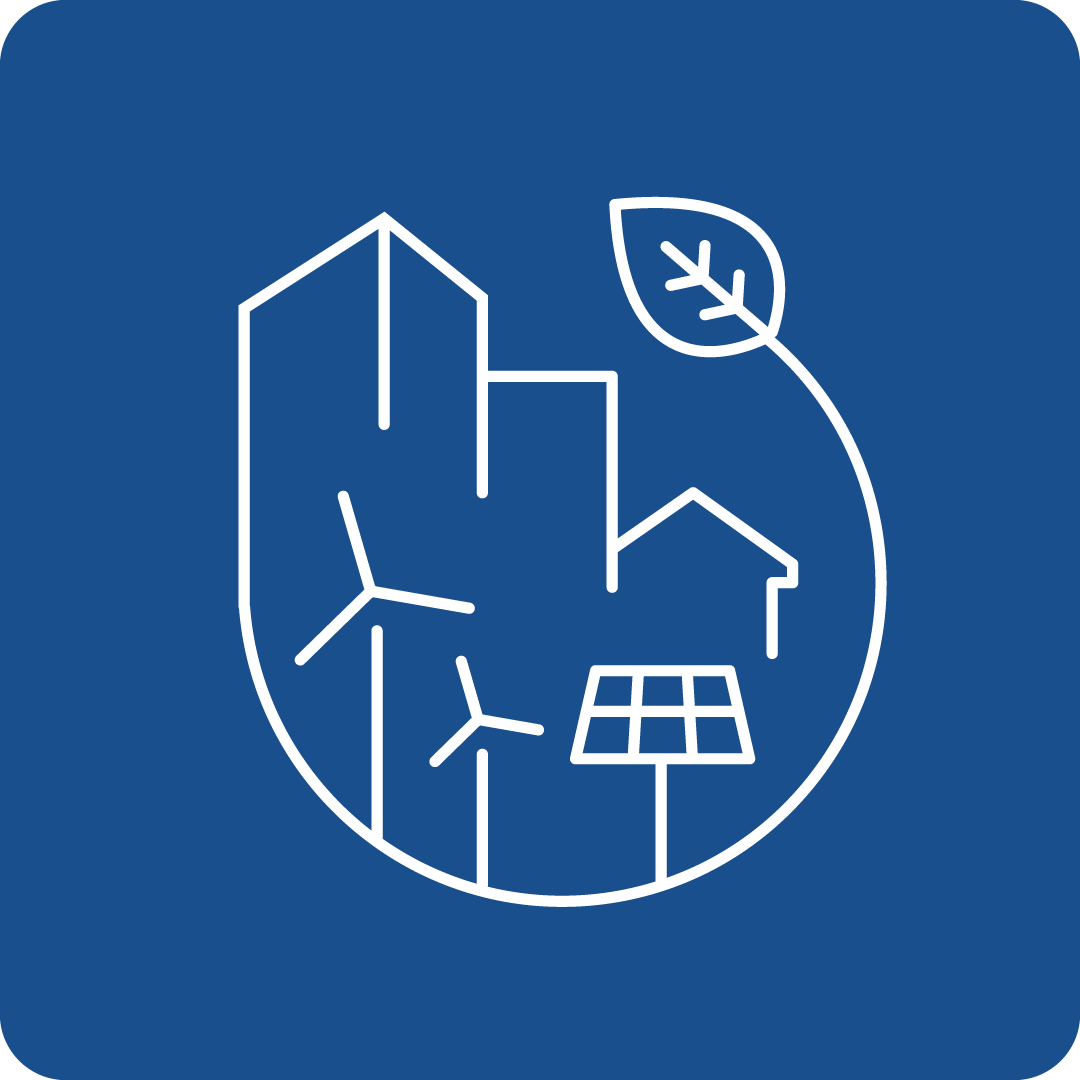Filter Search for grants
Call Navigation
Deadline expired
The deadline for this call has expired.
Call key data
Support services for energy communities
Funding Program
LIFE - sub-programme “Clean Energy Transition”
Call number
LIFE-2025-CET-ENERCOM
deadlines
Opening
24.04.2025
Deadline
23.09.2025 17:00
Funding rate
95%
Call budget
€ 7,000,000.00
Estimated EU contribution per project
€ 1,750,000.00
Link to the call
Link to the submission
Call content
short description
This topic aims to establish or expand services supporting the set-up and growth of energy communities.
Call objectives
Energy communities have been recognised as key players in the EU energy system for their potential role in meeting the 2030 and 2050 energy and climate objectives. Moreover, the European Commission is working on a Citizen Energy Package that, among other models of citizen engagement in the energy transition, will propose support mechanisms for the emergence and growth of energy communities in Europe.
Energy community projects can channel citizens’ and local authorities’ investment into renewables and energy efficiency while ensuring local ownership of energy assets. At the same time, energy communities have the potential to deliver other community benefits ranging from lower energy prices or local employment to social cohesion and inclusion. However, developing and realising energy community projects can be complex. In some cases, this is due to the regulatory and policy context (e.g. changing national support schemes for renewables, burdensome permitting, heavy administrative procedures, etc.). In others, challenges are linked to the lack of information and knowledge, limited access to finance, or difficulties in engaging citizens and establishing effective governance and decision-making structures. These hurdles prevent energy communities around Europe from reaching their full potential.
Beyond the work being done by Member States to define enabling frameworks for energy communities, an increasing number of local and regional authorities are creating services to support the emergence and development of energy communities and collective energy projects in their territories. In addition, in some contexts, energy community stakeholders are getting together to help each other by mutualising services and supporting other communities in project development. They do so by, for example, offering technical assistance, mutualising operation and maintenance activities, expanding access to financial instruments and new business models, or establishing partnerships to make sure enabling frameworks for energy communities adapt to the needs on the ground. These groupings have first-hand experience of the hurdles projects can face and can deliver effective assistance to stimulate community projects. In coordination with local and regional governments, they are emerging as new actors who could deliver effective support services for energy communities.
read more
Expected effects and impacts
Proposals submitted under this topic should present the concrete impacts that will be achieved by the planned activities.
Proposals should quantify the topic specific impacts (where relevant), the LIFE CET common indicators and any other project-specific performance indicators which they consider relevant for their action.
The impacts should be quantified for the end of the project and for 5 years after its end. Figures reported will be assessed considering the context in which they are generated and should be credibly linked to the foreseen activities.
The indicators for this topic include:
- Number of energy community services fully implemented, operational and tested before the end of the action. Their testing must trigger the first energy community project investments.
- Number of energy communities benefitting from the support (including new and existing entities).
- Amount of in-person support made available to energy community project developers (full-time equivalent person months).
- Number of energy communities established thanks to the services (detailing if they are RECs or CECs).
- Number of members (citizens or organisations) who have joined the energy communities because of the support provided.
- Number and type of stakeholders with increased skills.
- Number of local and regional authorities committed to replicate best practice experiences.
- (Where relevant) Number of groupings of energy communities mutualizing services.
Proposals should also quantify their impacts related to the following common indicators for the LIFE CET sub-programme:
- Primary energy savings triggered by the project in GWh/year
- Final energy savings triggered by the project in GWh/year
- Renewable energy generation triggered by the project (in GWh/year), specifying the type of renewable energy triggered
- Reduction of greenhouse gas emissions (in tCO2-eq/year)
- Investments in sustainable energy (energy efficiency and renewable energy) triggered by the project (cumulative, in million Euro).
read more
Expected results
Proposed actions should focus on establishing or expanding support services aimed at facilitating the set-up of new energy communities and the growth of existing ones.
The entity (or entities) in charge of delivering the support services should be clearly identified and justified. The support services can be provided by relevant local actors such as local or regional governments, energy agencies or umbrella energy community organisations (e.g. federations, associations of energy cooperatives). Proposals involving the mutualisation or sharing of services by umbrella energy community organisations or groupings of energy communities are encouraged.
Services should focus on supporting renewable energy communities (RECs) according to the revised Renewable Energy Directive ((EU) 2018/2001) and/or citizen energy communities (CECs) according to the Directive on common rules for the internal electricity market ((EU) 2019/944). Proposals should indicate which types of energy communities are targeted.
The services delivered to energy community projects must involve direct technical support with personalised advice through the different phases of project development (e.g. access to finance, business model definition support, legal advice, energy commercialisation, assistance for the operational phase). Services could also aim at scaling-up and professionalising energy communities using approaches such as peer-to-peer support and twinning programmes among communities with different levels of experience.
Proposals should specify the type of support provided and the way in which it will be implemented including staffing and communication channels. A constant physical presence is not mandatory (as support can also be provided in other settings such as temporary counters or regular meetings with project promoters). Approaches including mainly the provision of generic information and advice, access to guidance materials, and/or focusing on on-line platforms and tools without or with limited direct human interaction are not considered relevant to the scope of this topic.
The service design is to be detailed and justified considering the specific local/regional challenges to be addressed. Some of those obstacles may be linked to energy community project development (e.g. cooperation with Distribution System Operators), but proposals can also aim at tackling other local challenges (e.g. rural depopulation, the need to speed up renovations, tackling energy vulnerability, facilitating cooperation between citizens and Small and Medium-sized Enterprises).
Beyond the above, all proposals should:
- Demonstrate the support of the stakeholders who are necessary to ensure the success of the action through direct participation in the Consortium or a convincing strategy for their involvement (in particular, for local or regional authorities).
- Provide a credible approach regarding the way in which the service will reach and engage energy community project developers. This approach should be adapted to the specificities of the territories targeted and consider how to include diverse types of members.
- Foresee adequate training and capacity building for the staff delivering the services or actors needed for project implementation including (where relevant) local and regional authority staff, community members and installers. The objectives and content of training activities should be outlined in the proposal.
- Outline a compelling plan to ensure the continuity of the support beyond the lifetime of the project.
Proposals should include an explanation of the degree of development of communities in the areas targeted. Priority will be given to proposals focusing on geographic areas in which energy communities are less developed or on types of activities where fewer community experiences exist (e.g. community heating and cooling, citizen-led renovation, flexibility).
Proposals must ensure their complementarity to existing national enabling frameworks and local support for energy communities. They should also complement and make use of existing resources and networks as relevant (e.g. the European Energy Communities Facility, the Citizen Energy Advisory Hub).
Proposals are not expected to develop any new tools, databases, or digital platforms unless their added value compared to existing ones is clearly justified and their potential scale-up beyond the project convincingly addressed.
read more
Eligibility Criteria
Regions / countries for funding
Moldova (Moldova), Iceland (Ísland), Montenegro (Црна Гора), North Macedonia (Северна Македонија), Ukraine (Україна)
eligible entities
Education and training institution, International organization, Non-Profit Organisation (NPO) / Non-Governmental Organisation (NGO), Other, Private institution, incl. private company (private for profit), Public Body (national, regional and local; incl. EGTCs), Research Institution incl. University, Small and medium-sized enterprise (SME)
Mandatory partnership
Yes
Project Partnership
Proposals must be submitted by at least 3 applicants (beneficiaries; not affiliated entities) from 3 different eligible countries.
In order to be eligible, the applicants (beneficiaries and affiliated entities) must:
- be legal entities (public or private bodies)
- be established in one of the eligible countries, i.e.:
- EU Member States (including overseas countries and territories (OCTs))
- non-EU countries:
- listed EEA countries and countries associated to the LIFE Programme (associated countries) or countries which are in ongoing negotiations for an association agreement and where the agreement enters into force before grant signature (list of participating countries)
- the coordinator must be established in an eligible country
Entities from other countries (not listed above) are exceptionally eligible, if the granting authority considers their participation essential for the implementation of the action (see work programme).
Natural persons are NOT eligible (with the exception of self-employed persons, i.e. sole traders, where the company does not have legal personality separate from that of the natural person).
International organisations are eligible. The rules on eligible countries do not apply to them.
EU bodies (with the exception of the European Commission Joint Research Centre) can NOT be part of the consortium.
Entities which do not have legal personality under their national law may exceptionally participate, provided that their representatives have the capacity to undertake legal obligations on their behalf, and offer guarantees for the protection of the EU financial interests equivalent to that offered by legal persons.
other eligibility criteria
The Commission considers that proposals requesting a contribution from the EU of up to EUR 1.75 million would allow the specific objectives to be addressed appropriately. Nonetheless, this does not preclude submission and selection of proposals requesting other amounts.
Financial support to third parties is not allowed.
Additional information
Topics
Relevance for EU Macro-Region
EUSAIR - EU Strategy for the Adriatic and Ionian Region, EUSALP - EU Strategy for the Alpine Space, EUSBSR - EU Strategy for the Baltic Sea Region, EUSDR - EU Strategy for the Danube Region
UN Sustainable Development Goals (UN-SDGs)
![]()
![]()
![]()
Additional Information
Proposals must be submitted electronically via the Funding & Tenders Portal Electronic Submission System (accessible via the Topic page in the Search Funding & Tenders section. Paper submissions are NOT possible.
Proposals must be complete and contain all the requested information and all required annexes and supporting documents:
- Application Form Part A — contains administrative information about the participants (future coordinator, beneficiaries and affiliated entities) and the summarised budget for the project (to be filled in directly online)
- Application Form Part B — contains the technical description of the project (to be downloaded from the Portal Submission System, completed and then assembled and re-uploaded)
- Part C (to be filled in directly online) — contains additional project data and the project’s contribution to EU programme key performance indicators
- mandatory annexes and supporting documents (templates available to be downloaded from the Portal Submission System, completed, assembled and re-uploaded):
- detailed budget table (mandatory Excel template available in the Submission System)
- participant information including previous projects, if any (mandatory template available in the Submission System)
- optional annexes: letters of support
Proposals are limited to maximum 65 pages (Part B).
Call documents
Call Document LIFE-2025-CETCall Document LIFE-2025-CET(881kB)
To see more information about this call, you can register for free here
or log in with an existing account.
Log in
Register now


